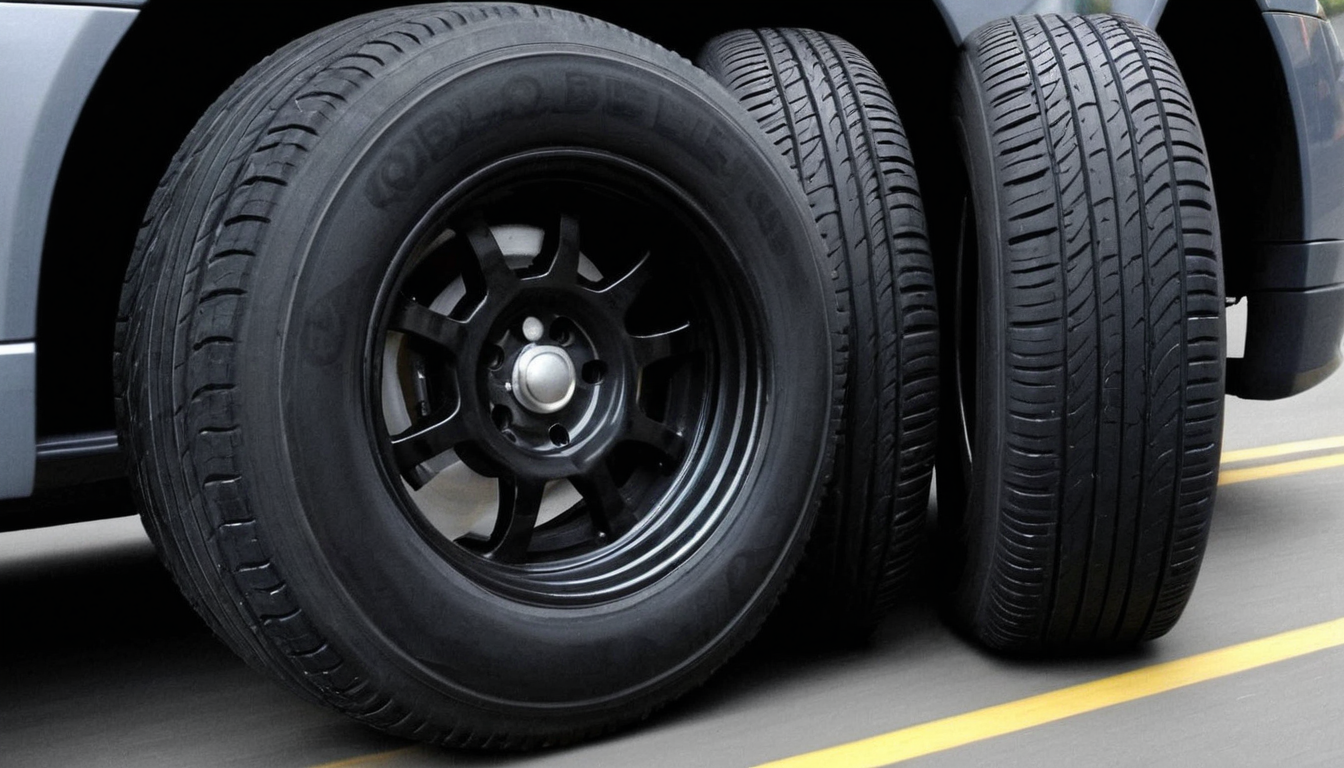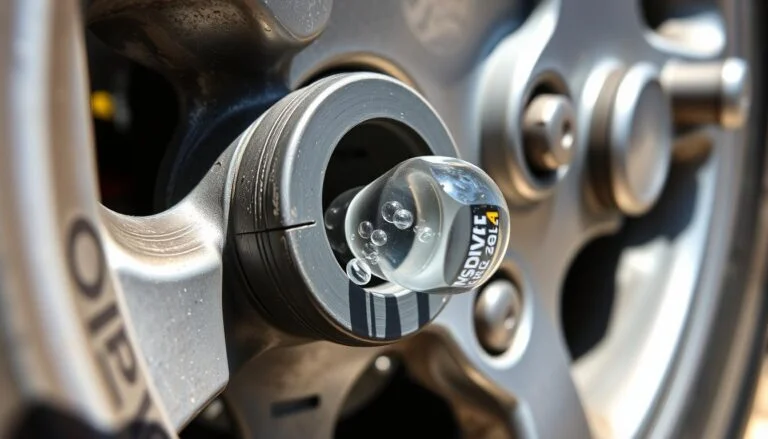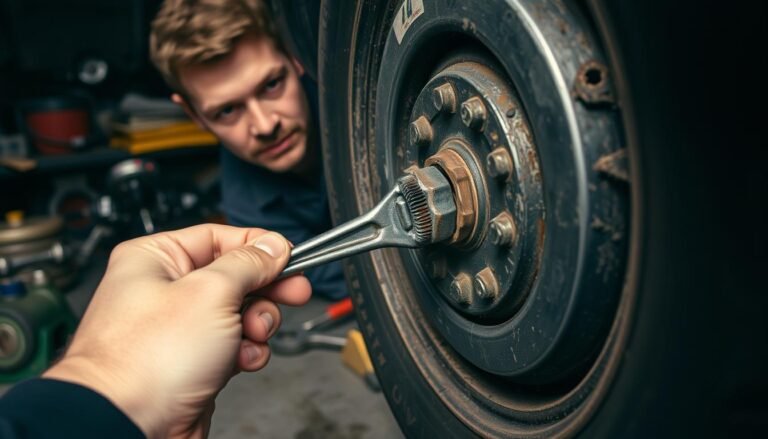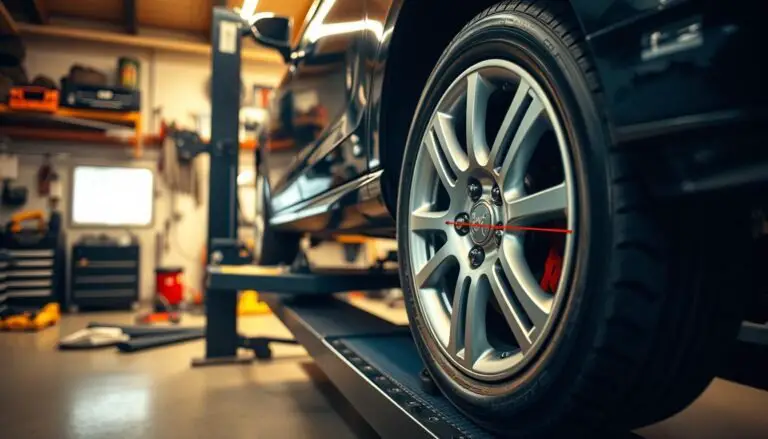How to Maintain Your Tires to Avoid Wobble?
Maintaining a vehicle’s stability and performance is crucial for a safe and comfortable driving experience. Wheel wobble or vibration can be unsettling and potentially dangerous, compromising both the driver’s control and the overall ride quality.
Addressing these issues promptly is essential to prevent accidents and ensure a smooth journey. By understanding the causes and implementing proper maintenance techniques, drivers can effectively minimize the risk of wheel wobble and vibration.
This article will explore the importance of preventing wheel wobble and provide practical tips on maintaining tires to ensure optimal performance. From regular inspections to proper balancing and alignment, we will cover the key aspects of tire care that contribute to a stable and reliable driving experience.
Why Prevent Wheel Wobble or Vibration?
Wheel wobble or vibration can significantly compromise vehicle safety and comfort. When a vehicle’s wheels are not properly balanced or aligned, it can lead to a shaking or vibrating sensation in the steering wheel, making it difficult for the driver to maintain control. This instability can be particularly dangerous at high speeds or in challenging driving conditions, increasing the risk of accidents.
Moreover, wheel wobble and vibration can cause premature wear on various vehicle components. The constant shaking puts additional stress on the suspension system, bearings, and other critical parts, leading to accelerated deterioration. By addressing these issues promptly, drivers can extend the life of their vehicle’s components and avoid costly repairs down the line.
Understanding the signs and causes of wheel wobble and vibration is crucial for maintaining a smooth driving experience. Some common indicators include:
- Steering wheel shake or vibration, especially at certain speeds
- Uneven tire wear or visible damage to the tire treads
- Vibrations felt through the vehicle’s floor or seats
- Pulling or drifting to one side while driving
By recognizing these symptoms early on, drivers can take proactive steps to diagnose and resolve the underlying issues. Regular tire inspections, proper balancing, and wheel alignment are among the key preventative measures that can help ensure a stable and comfortable ride.
How to Maintain Your Tires to Avoid Wobble?
Maintaining optimal tire performance is crucial to avoid wheel wobble, which can disrupt vehicle stability. Implementing a proactive maintenance schedule helps address minor issues before they escalate.
Regular Tire Inspections
Schedule routine tire inspections to monitor for potential issues. Focus on identifying any irregularities such as uneven wear patterns or signs of damage. Early detection of these issues allows for timely interventions, ensuring that tires remain in good condition and minimizing the risk of developing vibrations.
Proper Tire Balancing
Ensure tires are balanced to prevent uneven weight distribution that leads to wobble. Balancing should ideally occur every 10,000 to 12,000 miles. Professional tire technicians use precision equipment to achieve even rotation, which effectively eliminates sources of vibration.
Wheel Alignment
Pay attention to wheel alignment to maintain proper vehicle handling. Misalignment can cause the vehicle to veer and result in vibrations felt through the steering wheel. Routine alignment checks, particularly after experiencing impacts or suspension adjustments, help maintain optimal wheel positioning and enhance driving comfort.
Maintaining Correct Tire Pressure
Regularly verify tire pressure to support proper vehicle dynamics. Incorrect pressure can compromise handling and contribute to instability. Follow the vehicle manufacturer’s specified PSI levels to ensure balanced tire performance and prevent unwanted vibrations.
Suspension System Checks
Inspect the suspension system regularly to uphold vehicle stability. Look for wear in components such as shock absorbers and bushings, as these can affect how vibrations are managed. Keeping these parts in good working order enhances ride quality and reduces the likelihood of steering wheel shake.
Address Brake System Concerns
Ensure brake system components are in top condition to avoid contributing to wobble. Warped rotors or worn pads can cause vibrations during braking. Regular brake inspections and maintenance help maintain smooth vehicle operation and prevent handling disruptions.
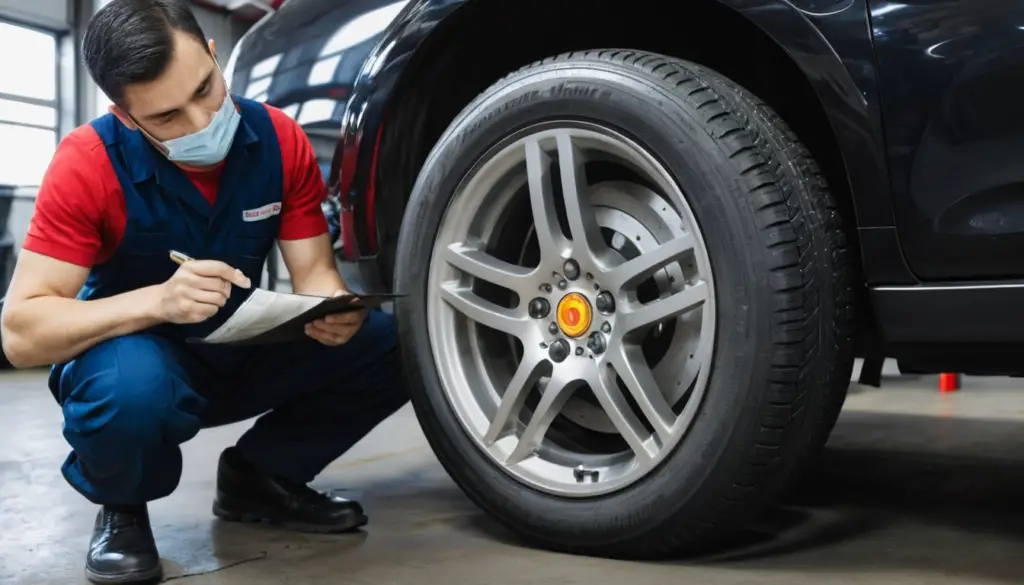
1. Regular Tire Inspections
Frequent tire inspections are essential for ensuring vehicle safety and handling precision. Tires are the primary interface between the road and your vehicle, making their upkeep crucial for preventing vibrations and maintaining stability. By routinely checking your tires, you can catch potential problems early, avoiding costly repairs and enhancing driving comfort.
Critical Inspection Points
During tire inspections, focus on identifying any unusual wear patterns or damage that could signal underlying issues. One crucial area to examine is the wheel bearings; problems here can manifest as grinding noises or vibrations. Wheel bearings facilitate smooth wheel rotation and are vital for maintaining proper vehicle handling, so any irregularities need immediate attention to prevent further complications.
Look closely at tire tread patterns for signs of abnormal wear. Uneven wear may result from alignment issues, imbalanced wheels, or suspension anomalies. Early detection of these patterns allows for prompt corrective measures, such as rebalancing or realigning wheels, which ensures even tire wear and prolongs their lifespan.
Checking for Physical Damage
Inspect tires for any visible damage, such as punctures, cuts, or sidewall bulges. Such damage can lead to air leaks or structural failure, increasing the risk of blowouts. Regularly assessing the tire surface and sidewalls helps ensure that your tires are fit for various driving conditions and reduces the likelihood of unexpected incidents on the road.
Additionally, pay attention to the tire sidewalls for signs of cracking or abrasions. These can compromise tire integrity, especially under load or high-speed conditions. Maintaining a vigilant inspection routine and addressing any issues promptly will help keep your tires reliable and your vehicle safe.
2. Proper Tire Balancing
Tire balancing plays a critical role in vehicle maintenance, ensuring a smooth driving experience and reducing the risk of vibrations. Imbalanced tires can lead to uneven tire wear and impact vehicle stability, especially noticeable at highway speeds. Consistent balancing should be part of your routine maintenance to keep your vehicle performing optimally.
The Balancing Process
During a tire balancing procedure, advanced machinery identifies any weight imbalances in the tire and wheel assembly. Technicians then attach counterbalancing weights to the wheel to rectify these disparities. This precise correction helps ensure even tire wear and enhances vehicle handling, effectively eliminating vibrations that can interfere with driving comfort.
Routine tire balancing is recommended every 10,000 to 12,000 miles, aligning with other essential maintenance tasks. This frequency helps prevent the accumulation of issues that can lead to costly repairs. By maintaining this schedule, you ensure that your tires function efficiently and contribute to a stable driving experience.
Importance of Professional Services
Engaging professional services for tire balancing is essential for achieving optimal results. Professionals possess the necessary expertise and equipment to conduct thorough adjustments, ensuring your vehicle remains stable and comfortable on the road. Attempting DIY balancing may overlook subtle imbalances, leaving potential issues unaddressed.
Moreover, professional services typically include a comprehensive inspection of the wheel assembly, which can uncover other potential problems such as bent rims or suspension wear. This comprehensive approach ensures all components are operating correctly, enhancing overall vehicle safety. By prioritizing expert balancing services, drivers can enjoy a vibration-free ride and extend the lifespan of their tires and suspension systems.
3. Wheel Alignment
Achieving precise wheel alignment is essential for a vehicle’s safety and efficiency. When wheels are misaligned, it can result in a host of issues, including compromised maneuverability and increased tire degradation. Prompt attention to alignment irregularities ensures a smoother driving experience and extends the lifespan of your tires.
Indicators of Misalignment
Detecting misalignment early can prevent further complications. Look out for symptoms such as the car drifting off its intended path, unusual wear on tire edges, or the steering wheel not centering after a turn. These signs necessitate an alignment evaluation to restore optimal vehicle performance.
Alignment involves adjusting the wheel angles to factory settings, ensuring they are parallel and evenly interact with the road. This adjustment not only promotes uniform tire wear but also enhances steering accuracy and fuel efficiency. Regular checks are recommended, especially after impacts or alterations to the suspension, to maintain vehicle integrity.
The Role of Professional Alignment
Employing professional alignment services is crucial for accurate adjustments. Technicians use state-of-the-art equipment to fine-tune the camber, caster, and toe of each wheel. This precision work guarantees smooth handling and reduces stress on the vehicle’s suspension.
In addition to aligning wheels, professionals conduct a comprehensive assessment of the suspension components. This inspection can identify wear in elements such as bushings or tie rods, which might affect alignment. By addressing these issues, you ensure a balanced and controlled driving experience.

4. Maintaining Correct Tire Pressure
Ensuring tire pressure remains at optimal levels is critical for vehicle safety and efficiency. Incorrect tire pressure can influence how a vehicle handles and performs, making it crucial to monitor this regularly. By keeping tire pressure within recommended limits, drivers can avoid unnecessary stress on tires and the suspension system, reducing the potential for vibrations and instability.
Regular Pressure Checks
Incorporate monthly tire pressure checks into your vehicle maintenance routine. Utilize a precise tire pressure gauge to verify each tire’s PSI, ensuring it aligns with the specifications outlined by the vehicle manufacturer for optimal performance and longevity. This practice not only helps in preserving tire integrity but also enhances fuel economy by minimizing rolling resistance.
Temperature fluctuations can affect tire pressure, with colder temperatures potentially decreasing it and warmer temperatures increasing it. Perform checks particularly during seasonal changes to accommodate these variations and maintain consistent handling and safety. Adjusting tire pressure based on these factors ensures your vehicle remains agile and secure under diverse conditions.
Impact on Vehicle Dynamics
Proper tire pressure is fundamental to maintaining consistent vehicle dynamics. Low pressure can cause tires to exhibit increased rolling resistance, potentially affecting acceleration and braking response. This can lead to difficulties in maneuvering, especially during abrupt directional changes.
On the other hand, excessive tire pressure can diminish ride comfort and traction due to reduced contact with the road, leading to uneven tire wear that might exacerbate handling issues. Keeping tire pressure at the recommended levels ensures that the vehicle responds predictably to driver inputs, supporting both stability and comfort.
5. Suspension System Checks
Regular assessment of the suspension system ensures a vehicle’s handling remains precise and responsive. The suspension system, which includes components such as dampers, coils, and control arms, is crucial for absorbing road shocks and maintaining tire contact. Persistent wear or damage can undermine these functions, leading to driving discomfort and potential safety risks.
Essential Components for Review
- Dampers: These components play a key role in controlling the vehicle’s movement over uneven terrain. Signs of wear, such as fluid leaks or reduced damping ability, necessitate immediate attention to preserve the vehicle’s stability and comfort.
- Control Arms: Vital for maintaining the correct wheel alignment, control arms can become worn or bent, affecting vehicle dynamics. Regular inspection helps ensure they remain intact, thereby preventing misalignment and promoting even tire wear.
- Coil Springs: These provide the necessary support to maintain vehicle height and absorb impact. Inspect for any indications of sagging or breakage, as these can disrupt vehicle balance and compromise handling.
Mitigating Vibration through Suspension Care
A well-maintained suspension system is instrumental in preventing vehicle vibrations. By ensuring each component operates efficiently, drivers can avert handling anomalies and maintain a smooth driving experience. Regular evaluations by qualified technicians will help identify and rectify issues before they escalate.
Proactive suspension maintenance not only enhances comfort but also safeguards the vehicle’s other critical systems, such as steering and braking. This comprehensive approach contributes to an overall safer and more reliable driving environment.
6. Address Brake System Concerns
The brake system is integral to vehicle performance, directly impacting safety and handling. Comprising rotors, pads, and calipers, this system requires careful monitoring to ensure effective stopping power. Any deficiencies can lead to compromised braking efficiency and introduce unwanted vibrations during vehicle operation.
Key Areas to Monitor
- Brake Rotors: Ensure rotors remain flat and smooth to facilitate optimal contact with brake pads. Warping or surface irregularities can introduce steering wheel tremors and reduce braking effectiveness. Regular evaluations and resurfacing or replacement, when necessary, maintain rotor integrity and performance.
- Brake Pads: These components provide crucial friction against the rotors, enabling deceleration. Worn pads can diminish braking capacity and lead to rotor degradation if left unchecked. Regular inspection and timely pad replacement are essential to preserve the braking system’s functionality and prevent vibrations.
- Calipers: This component must apply uniform pressure for consistent braking. If calipers stick or malfunction, they can cause irregular braking force, impacting stability. Routine assessment and maintenance of calipers ensure they operate smoothly, maintaining overall vehicle handling.
Preventive Measures for Brake System Health
Implement a structured maintenance routine to keep the brake system in peak condition. Schedule inspections focusing on the wear and functionality of rotors, pads, and calipers. Proactive maintenance mitigates the risk of more severe issues, ensuring reliable brake performance and supporting smooth vehicle operation.
Addressing brake system maintenance not only enhances safety but also supports the longevity of related vehicle systems. By ensuring efficient brake operation, you reduce the strain on the suspension and steering components, contributing to a consistent and comfortable driving experience.
Tips on Maintaining Tire Health
Preserving tire health is essential for ensuring vehicle safety and maximizing performance. Consistent maintenance practices are vital for extending tire life and supporting optimal vehicle dynamics.
1. Regularly Rotate Tires
Tire rotation is vital for maintaining consistent tread depth across all tires, which is crucial for balanced traction and control. Rotate tires every 6,000 to 8,000 miles to achieve this balance, helping to prevent uneven wear that can lead to alignment issues and compromise vehicle safety. This practice assists in distributing the wear evenly, ensuring that no single tire bears a disproportionate amount of stress, which can lead to premature failure.
- Uniform Tread Wear: Regular rotation ensures that each tire wears evenly, promoting better traction and handling, especially in varying road conditions.
- Prolonged Tire Life: By rotating tires, you enhance their lifespan, leading to fewer replacements and consistent performance over time.
2. Use Quality Tires
Selecting the right tires for your vehicle is crucial for maintaining safety and performance across diverse driving conditions. High-quality tires are engineered to offer superior grip, durability, and efficiency. When choosing tires, consider factors such as climate, driving habits, and load capacity to ensure they meet your specific needs and enhance your vehicle’s performance.
- Improved Safety: Quality tires provide better traction, which is essential for safe driving in both wet and dry conditions, reducing the risk of skidding.
- Enhanced Durability: Investing in well-constructed tires means they are more resistant to wear, extending their service life and improving overall vehicle stability.
Choosing tires that align with your driving environment ensures they can withstand the rigors of daily use, from city streets to highways. By focusing on quality and compatibility, you support your vehicle’s performance and safety, ensuring a reliable driving experience.
By implementing these tire maintenance practices, you can significantly reduce the risk of wheel wobble and vibration, ensuring a safer and more comfortable driving experience. We at Car Wheel Blog are committed to providing you with the knowledge and resources to keep your vehicle performing at its best. For more expert tips and insights on wheel and tire care, visit us at Read More.

